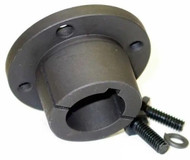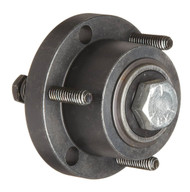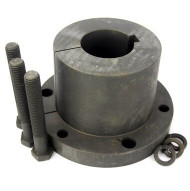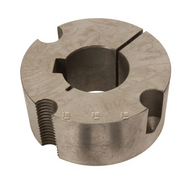BUSHINGS
In order to help hold a spinning drive shaft in place and lessen vibration, bushings are installed between a housing and the shaft into the inside diameter of a belt pulley. This prolongs the life of hubs and shafts. Pulley bushinsg are mounted via hardware (bolts) onto the corresponding pattern in the pulley hub formong a tight univeral rotational unit. One of the benefots of a pulley bushing is the vast choice of shaft sizes that can be easily accomodated with a simple dismount of the pulley. There are (3) main types of pulley bushings. The split along one side of quick detachable (QD) bushings makes it easier to place them on shafts with different diameters. For greater shaft clamping power, split taper bushings (ST) are flanged with a double-split barrel. Installing taper lock (TL) bushings involves pushing the bushing into the bore and using a keyway. Keyless bushings can be employed in applications where the direction of shaft rotation must shift because of their smooth, round bore that lacks a keyway or set screw. Idler bushings offer industrial belt, chain, geared drive, and conveyor systems mountable, low-friction rotational support.





